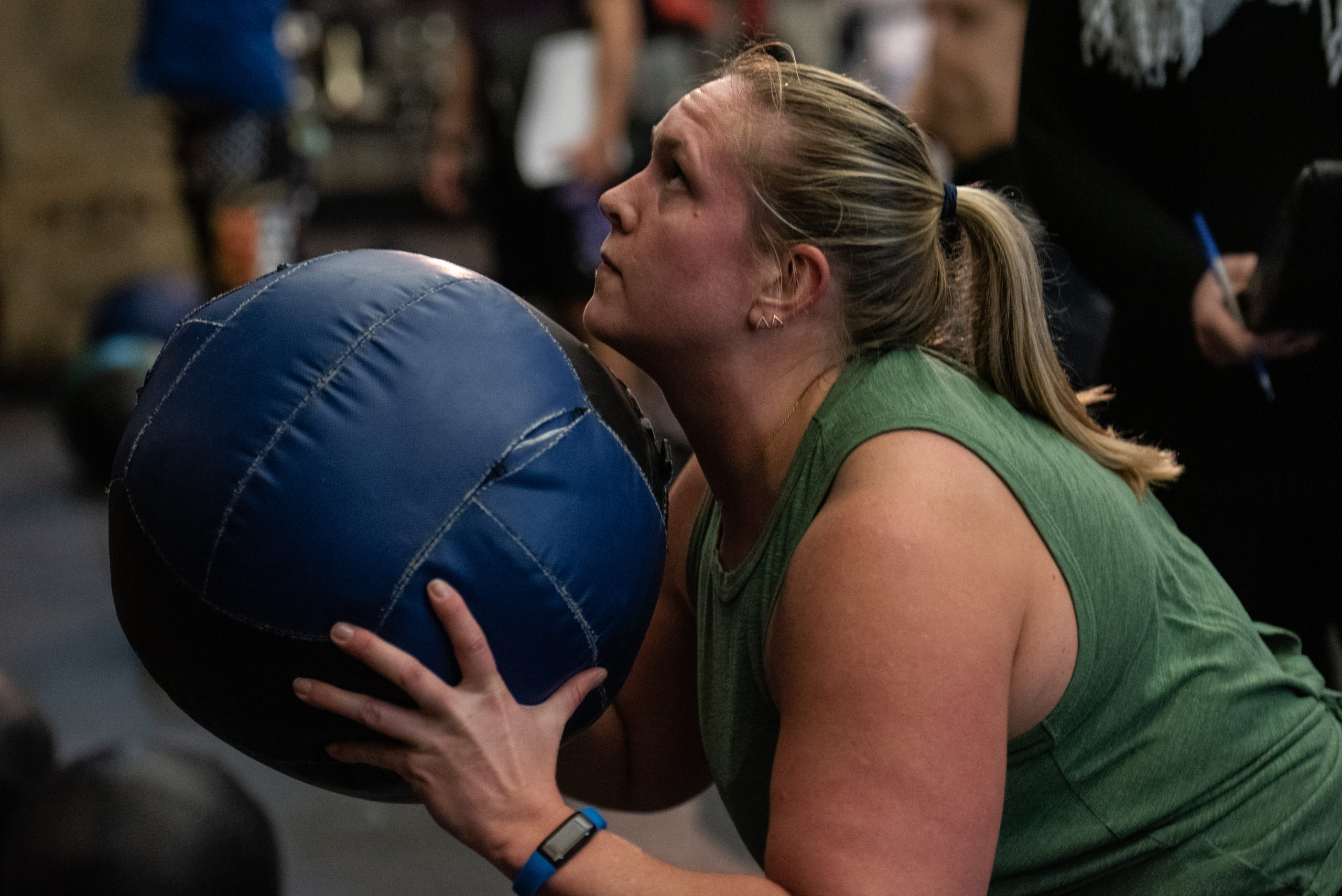
How High Standards Influence Better Performance
Written by Kirsten Ahrendt
There are a number of ways to improve our performance metrics at various CrossFit exercises. The more complex and technical a skill, the longer the journey will be. When it’s something simpler, the journey to “better” is clearer (not necessarily easier).
We improve at CrossFit movements by one (or all of) the following pathways:
- Increasing our efficacy and efficiency (motor control and mechanics. At certain thresholds, efficiency beats hard work when hard work is inefficient)
- Increasing our physical capacity (strength, endurance)
- Increasing our mental capacity aka – toughness (stress resiliency and state management)
How does “setting a standard” apply to improving at working out?
My favorite and most personal example of this is wallballs. Every time I pickup a wall ball, I have a minimum standard of 15 reps (nearing 20) that I know I’ll perform – regardless of fatigue, what it’s paired with, etc. It’s my own “personal rep standard”. I don’t decide in the moment, this is not debatable.
For context, I used to HATE wall balls. Probably because I’m a long-femured, stiff-ankle squatter. But then I realized that I could improve my performance metrics on this one exercise simply by being more mentally stringent with myself. I didn’t need to get stronger (it doesn’t take absolute strength to move a 14# wall ball), I didn’t need better form (my movement efficacy was fine), I needed to make a CHOICE before I picked up the ball.
Do you have a standard # of wall balls that without a doubt, you demand yourself to complete every time you pick the ball up?
Plan A or Plan B?
Setting a standard and having a CLEAR EXPECTATION is a powerful tool in fitness because it creates clarity on action and options. In essence, it removes any Plan B. When you don’t have a plan-B…YOU MAKE PLAN-A WORK! And eventually, when you successfully meet Plan A enough times, it becomes easy to do so.
Don’t Make Hard Decisions Doing Hard Things!
The old adage, “Never make a decision while going uphill,” comes to mind. When possible and appropriate, make your decision before you start something. For example:
- I will maintain an RPM of 60 on the bike this interval
- I will not put the bar down between cleans and shoulder to overhead
- I will stick to my original game plan of 15-12-9 unbroken reps
All of these “standards” generally work best when we’re discussing simpler/less technical movements, and of course, for all those screaming from the back – yes! There’s room for being flexible and adaptable and to change a game plan in the middle of something…but watch out, that can become a default habit you may not want to keep! As we use this tactic to improve our performance, we must be willing to sacrifice other areas where we might have pushed harder. It may mean taking a longer transition between exercises, or changing a gameplan on another station to allow for the extra effort (mental and physical) to stick to the new standard we’re building.
If you always go into workouts, stations, or intervals with a “I’ll see how it goes once I get started,”– attitude, I promise, you’ll always leave something on the table in terms of performance. Shit will always feel hard and uncomfortable. You will rarely feel GREAT about maintaining your goal pace, your unbroken reps, or sticking to your gameplan mid-workout. That’s why we SET IT BEFORE we are under duress. Because rarely do we choose the “hard” thing when we’re already in the “hurt”. But if it’s the only path we’re mentally allowing ourselves, then there’s no choice to be made; Only action to be taken.
**I should specify that this content is directed at a more experienced CrossFitter, or someone who has been attending class for a while. I also wouldn’t suggest this strategy of a novice or in regards to an exercise you’re unfamiliar with.**
In Closing…
Self-reflect and determine – what’s your standard for wall balls? Is there another movement in the gym that you have clearly identified for yourself and mentally and physically prepare to complete in a set volume or pace? If so, would you identify the movement as a weakness or strength? Or was it a weakness that has now become a strength?
I’d love to hear. Let’s all agree, some things in the gym just shouldn’t have a plan B.